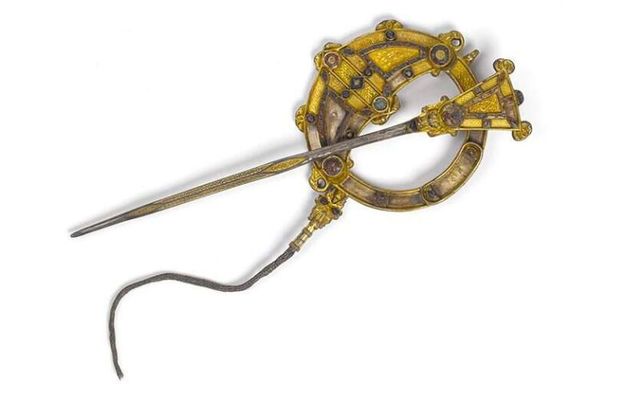The Tara Brooch is perhaps Ireland’s greatest piece of jewelry dating from the 7th century AD. It remains a popular symbol of Ireland and the country's rich ancestral past.
Although the beautiful brooch is named after the Hill of Tara, traditionally seen as the seat of the High Kings of Ireland, the Tara Brooch has no connection to either the Hill of Tara or the High Kings.
The brooch was supposedly found in August 1850 on the beach at Bettystown, County Meath by a peasant woman. The story goes that she found it in a box buried in the sand, though many believe the brooch was actually found inland but the woman’s family altered the facts to avoid a legal dispute with a landowner.
It was sold to a dealer and then made its way into the hands of Dublin jeweler George Waterhouse. With a keen sense of trends, Waterhouse was already producing Celtic Revival jewelry, which had become immensely fashionable over the previous decade. It was he who renamed the precious item the "Tara Brooch," in order to make it more alluring.
Waterhouse chose the name Tara in order to link the brooch to the site associated with the High Kings of Ireland, "fully aware that this would feed the Irish middle-class fantasy of being descended from them."
And it worked. The Tara Brooch was displayed as a standout showpiece at The Great Exhibition in London in 1851 and the Paris Exposition Universelle, as well as the Dublin exhibition visited by the Queen in 1853. Prior to this, it had even been specially sent to Windsor Castle for her inspection.
In 1872, the brooch was added to the collection of the Royal Irish Academy, which later issued its antiquities to the National Museum of Ireland, where the Tara Brooch remains today.
The National Museum notes that “It is made of cast and gilt silver and is elaborately decorated on both faces. The front is ornamented with a series of exceptionally fine gold filigree panels depicting animal and abstract motifs that are separated by studs of glass, enamel, and amber. The back is flatter than the front, and the decoration is cast. The motifs consist of scrolls and triple spirals and recall La Tène decoration of the Iron Age.
“A silver chain made of plaited wire is attached to the brooch by means of a swivel attachment. This feature is formed of animal heads framing two tiny cast glass human heads.
“Along with such treasures as the Ardagh Chalice and the Derrynaflan Paten, the Tara Brooch can be considered to represent the pinnacle of early medieval Irish metalworkers’ achievement. Each individual element of decoration is executed perfectly and the range of technique represented on such a small object is astounding.”
* Originally published in December 2014.




Comments